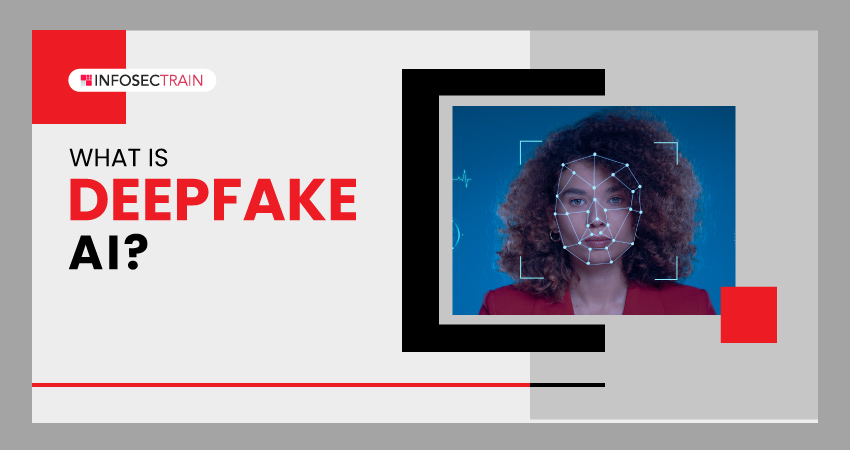What is Deepfake AI?
The growth of Artificial Intelligence in the digital age has paved the way for some remarkable innovations, but it also led to some alarming technological developments. One such development is Deepfake AI, a concept that has attracted much interest in recent times. Deepfake AI is a potent and disputed combination of Artificial Intelligence (AI), machine learning, and image processing methods that can produce compelling but entirely fake multimedia content, including videos, photos, and audio recordings.

Since its creation, Deepfake AI has swiftly changed, provoking curiosity and concern among researchers, media experts, and the general public. This article will help you better understand what Deepfake AI is, the ethical issues associated with its spread, and how to spot Deepfakes.
Table of Contents
What is Deepfake AI?
Example of Deepfake AI Case
Social and Ethical Implications of Deepfakes
How Do You Recognize a Deepfake?
What is Deepfake AI?
Deepfake AI, short for “deep learning” and “fake,” is a technology that uses deep learning techniques and Artificial Intelligence (AI) to generate highly convincing fake or manipulated digital information, generally in the form of videos, images, or audio recordings. Deepfakes are explicitly developed to exhibit high authenticity, thereby presenting a considerable challenge for individuals attempting to differentiate between manipulated content and original, unmodified media.
Although Deepfake technology offers exciting potential for entertainment, arts, voice cloning, research and development, and face swapping, it also poses ethical concerns because it can spread misinformation, create fake news, allow identity theft, manipulate public perception, and compromise privacy. Consequently, it underscores the imperative for responsible advancement and regulation of this formidable artificial intelligence tool.
Example of Deepfake AI Case
In a notable incident in Kerala, India, in July 2023, a man fell victim to a scam of Deepfake AI technology. In this case, a fraudster utilized Deepfake technology to impersonate the identity of the victim’s former coworker during a video call, falsely claiming a medical emergency and urgently requesting money. The victim transferred the funds without realizing he had been deceived. This is the first reported instance of a Deepfake scam in India.
Social and Ethical Implications of Deepfakes
Deepfake AI’s growth poses serious ethical issues and problems for society.
- Misinformation: Deepfake AI can be used to damage trust in the media and institutions by producing false information, political smear campaigns, or misleading content.
- Identity Theft: Deepfake AI can be used by malicious actors to impersonate individuals to commit fraud and steal their identities.
- Manipulation: Deepfake AI can be used for harassment and cyberbullying, as well as for extortion or blackmail.
- Legal and Ethical Dilemmas: Deepfake AI’s legality and ethical limits are intricate issues that legal professionals, legislators, and society at large must address.
- Privacy Invasion: Deepfake AI technological advancement can present a significant challenge to maintaining personal privacy, as individuals can fall victim to synthetic information without explicit knowledge.
How Do You Recognize a Deepfake?
Pay attention to these warning indicators that identify Deepfake:
- Inconsistent Facial Expressions: Observe unnatural or mismatched facial motions, such as asynchronous blinking of the eyes with overall facial gestures
- Unusual Lighting and Shadows: Look for unusual lighting and shadows that do not match the surroundings on the subject’s face
- Edge Artifacts: Due to imperfect blending, Deepfakes may include artifacts at the subject’s edges, such as blurriness or pixelation
- Strange Audio Sync: Observe if the voice sounds robotic or jerky or if the audio doesn’t match the lip movements perfectly
- Inconsistent Background: Look for abrupt or distorted alterations in the background, indicating tampering with the scene
- Unnatural Eye Reflections: Observe subjects’ eyes since they can lack realistic reflections or exhibit unusual glints
- Minor Flaws: Real people naturally have blemishes or moles; Deepfakes may lack these flaws
- Context and Source: Check the source’s credibility and the content’s context, especially if it looks sensational or doubtful
About InfosecTrain
InfosecTrain is a highly respected and well-known training provider known for its wide array of Information Security courses. We deliver a comprehensive learning experience under the guidance of highly experienced trainers to help you gain a strong understanding of the subject. Whether you prefer interactive live sessions with instructors or the flexibility of self-paced learning, our course options are designed to accommodate your preferences. We aim to make it easy for you to start and successfully complete your educational journey. Enrolling with InfosecTrain means you will acquire valuable skills that can significantly boost your professional opportunities and propel your career forward.



 1800-843-7890 (India)
1800-843-7890 (India) 
